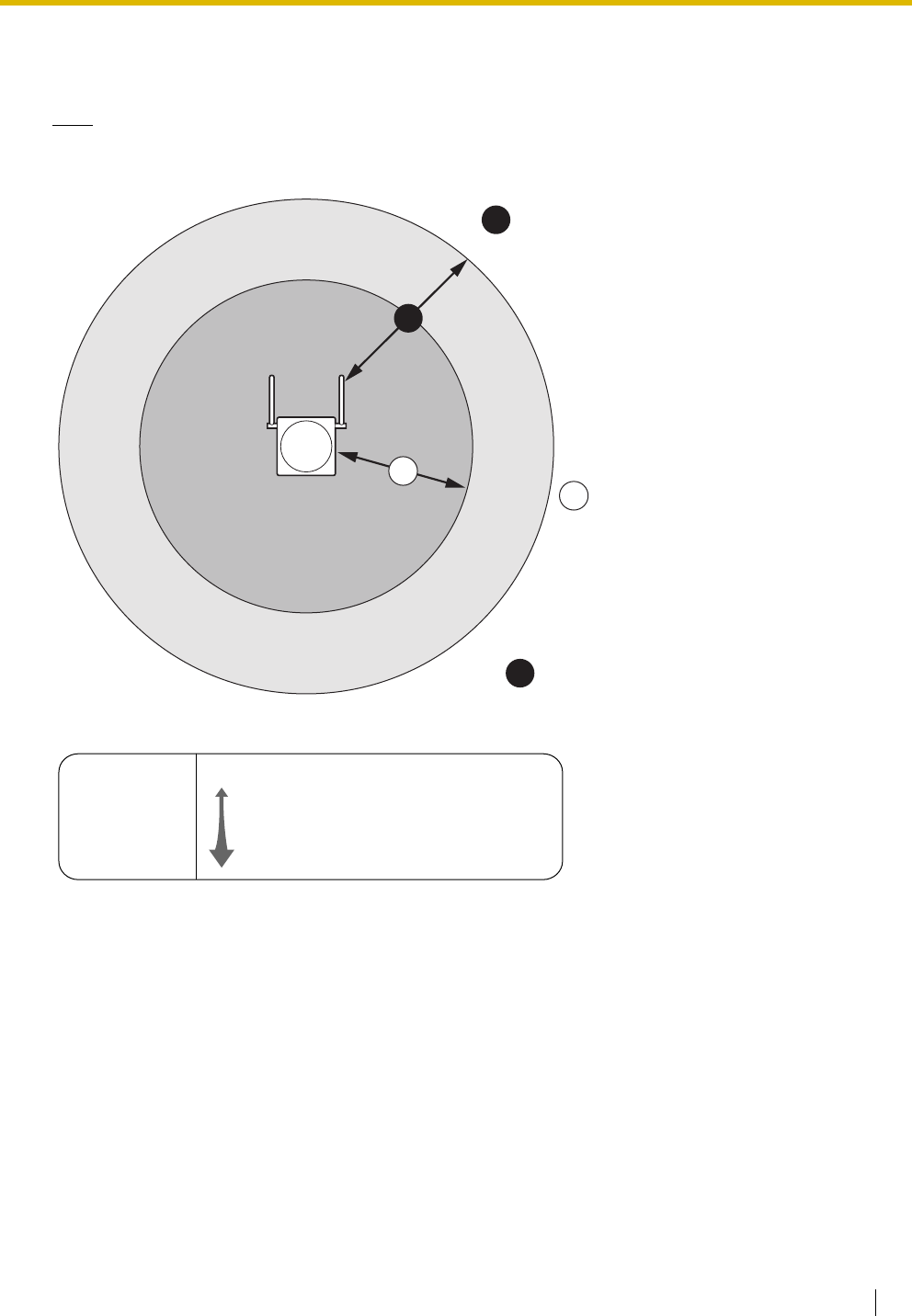
2.8 Connection of DECT Portable Stations
Installation Manual 151
CS Coverage Area
The example below shows the size of the coverage area of 1 CS if it is installed in an area with no obstacles.
Note
Radio signal strength levels are measured during the site survey (refer to "2.8.5 Site Survey Using the
KX-TCA255/KX-TD7590").
Site Survey Preparation
1. Obtain a map and investigate the installation site.
a. Check the obstacles (e.g., shelves, columns, and partitions).
b. Check the materials of the structures (e.g., metal, concrete, and plywood).
c. Check the layout and dimensions of the room, corridor, etc.
d. Write down the above information on the map.
2. Examine the service area required by the user on the map, referring to the following example.
a. Draw the coverage area around a CS. Extend the coverage area 30 m to 60 m in each direction,
depending on the materials of the building structures and obstacles in the installation site. Note
that a CS cannot be installed outside a building.
b. If 1 CS cannot cover the entire service area, install additional CSs as required. Overlap the
coverage areas of adjacent CSs.
Gray Zone:
Conversation will be
intermittent
Coverage Area
Radio signal strength level is
greater than "3".
(About 50 m to 60 m)
Good Coverage Area
Radio signal strength
level is greater than "8".
(About 30 m to 40 m)
Good sound quality
can be maintained.
Out of Service:
Cannot make/receive calls
A
B
A
B
Radio Signal Strength Levels
C
Out of range
Receives noise easily or disconnects
May receive noise
Good
Better
Level: 00
Level: 01 to 02
Level: 03 to 07
Level: 08 to 10
Level: 11 to 12


















